Sightrunning Madrid: from the Bernabéu to the Calderón
To celebrate the final Liga encounter between Atlético Madrid and Real Madrid at the Vicente Calderón we ran the 11 kilometres to the ground across Madrid from the Bernabéu.

The Santiago Bernabéu and the Vicente Calderón: Madrid’s two biggest football stadiums, belonging to Real Madrid and Atlético Madrid respectively. The two grounds lie at other end of the capital, Madrid’s Bernabéu in the posher north, Atleti’s Calderón in the grittier south.
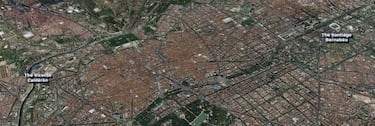
This weekend is a poignant one for the Calderón; on Saturday 19 November 2016 it will host its very final Madrid derby, Atlético Madrid – Real Madrid, in the Liga. That’s because Atleti are off, leaving behind their home of 50 years and heading out to their new gleaming ground in San Blas.
The challenge: run from the Bernabéu to the Calderón
To pay homage to Atleti's old faithful, we decided to send out two of our intrepid journos to run the route from Real Madrid’s Bernabéu to Atlético’s Calderón, and at the same time, take the temperature of the city as it builds up to derby day.
Around six and a half kilometres as the crow flies separate the two grounds, and the route between them, going through the centre of the Spanish capital and passing many of its famous sites, is a perfect running trail. In fact for anyone visiting Madrid (or even residents!) it’s spot on for what’s now being called sight-running, or running tourism. Basically getting your trainers on and heading out to see the city, while working up a sweat.

Warning: before starting it looked like it would all be downhill, but it turns out that's maybe just because the Bernabéu is in the north of Madrid, and the Calderón is in the south…
Madrid, from north to south
If you want to explore the Spanish capital the route between the two stadiums is almost ideal. Starting in the new financial district in Chamartín at the Bernabéu, where Madrid have played their football since 1947, you’ll see the skyscrapers of modern Madrid all around (along with the four new glass and steel behemoths built on the old Real Madrid training ground if you look north up the Castellana).
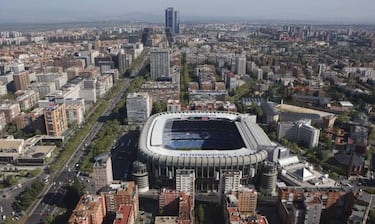
The run takes you through moneyed north Madrid, down the Golden mile of Calle Serrano, past the boutiques and shops of the planet’s leading designer names (you’ll no doubt spot photos of Ronaldo and company promoting their 'favourite' watches and clothes), to the Puerta de Alcalá, the first post-Roman triumphal arch in Europe (older than the Arc de Triomphe in Paris and the Brandenburg Gate in Berlin). This neo-classical gate was built in 1778 under the instruction of King Charles III and, maybe more importantly, Katy Perry performed Firework here in 2010 to 100,000 fans for the MTV Europe Music Awards, along with a pyrotechnic display.
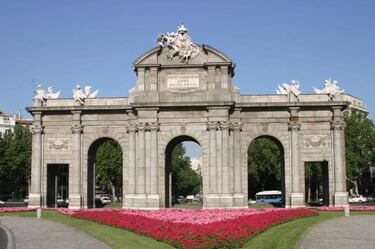
The Puerta de Alcalá is right next to the entrance to the Retiro Park, often described as central Madrid’s green lung, and a huge oasis of peace (dressed-up Winnie the Poohs and Mickey Mouses peddling balloons to ice-cream eating younsters aside). For runners it’s a perfect place to head for if you want to avoid the cars while still being in the centre of the capital.
Sightrunning
Cibeles: where Real Madrid celebrate
But to get to the Calderón, we turned away from the Retiro, and headed west down Calle Alcalá to the Plaza de Cibeles, where Cybele, an Anatolian Mother goddess, can be seen driving her lion-drawn chariot.
Cybele is famous in the heart of every Real Madrid fan, her plaza is the place where Los Blancos celebrate their trophy triumphs. Here the Real Madrid captain will present the trophy to the goddess and the throngs of Madrid fans (that is unless Sergio Ramos has dropped it under the team bus…).
Atlético's fans head to Neptune
The tradition of celebrating at Cibeles began in the 1970s, and for a number of years BOTH Real Madrid and Atlético Madrid fans came here to celebrate their respective wins, but in 1991 the Atleti supporters decided they’d had enough of sharing the fountain with ‘that lot from up north’ and decided to celebrate their Copa del Rey win just a little further south down the Paseo de la Castellana, with Neptune, the god of freshwater and the sea, whose statue presides over the impressive Plaza de Cánovas.
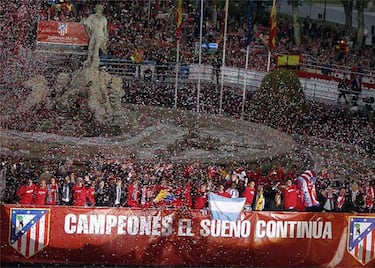
And that’s where our route takes us next, passing the Museo Thyssen on the right (which houses works by Titian, Rubens, Rembrandt, Monet, Pissarro, Van Gogh, Picasso, Munch and Dali) before reaching the hoary old sea god. Just a little bit further down from here is the Prado, home to Velazquez’s Meninas and Goya’s Majas, but we turn right, and head up the hill (a rather steeper one than you might like at this stage in the run) past Spain’s parliament building, with its famous lions, and on to the Puerta del Sol, kilometre zero for the country’s road network.
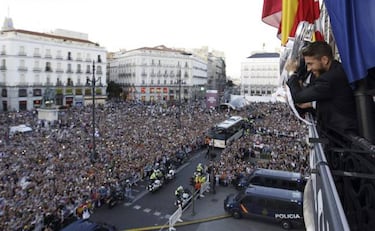
Plaza Mayor: King Philip III and a friendly spiderman
The frescoed Plaza Mayor is our next stop (or at least a chance to run a bit more slowly): home to painters, street performers and a friendly spiderman, as well as, right in the centre of the square, a bronze statue by Jean Boulogne and Pietro Tacca of King Philip III (d. 1621), who ruled the Spanish empire at its height.
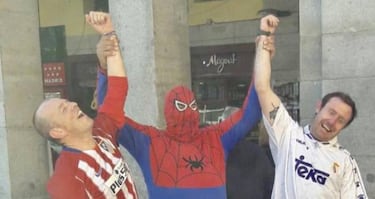
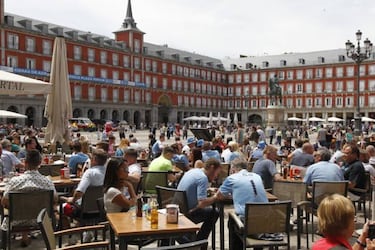
We did a quick running tour of the Mercado de San Miguel, to find out who the patrons and the stall tenders thought would win on Saturday (a draw seemed to be the most common result), but you could easily skip this and sprint straight down Calle Santiago to the mighty Palacio Real.
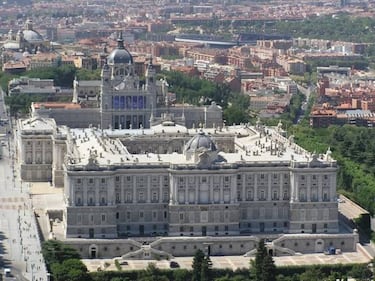
Nearly there: mostly downhill to the Calderón
From the palace the route takes you along Calle Bailén, with views over the Sierra de Guadarrama to your right, and down to Calle Segovia (a long way below under the bridge), before you reach the Real Basilica de San Francisco.
At this point you’re nearly there, a quick trot down Paseo de Pontones and you can now see the Calderón, gleaming by the river. Along the Paseo de los Melancólicos and there you are, at Atleti’s soon to be demolished stadium. But this Saturday, before a sell-out crowd, Simeone’s side will try and get one over on their rivals from up at the Bernabéu one last time in their old home.
Running in Madrid
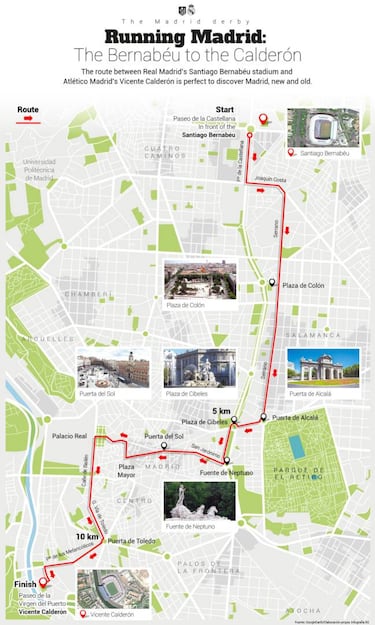
The Bernabéu to the Calderón as we ran it:
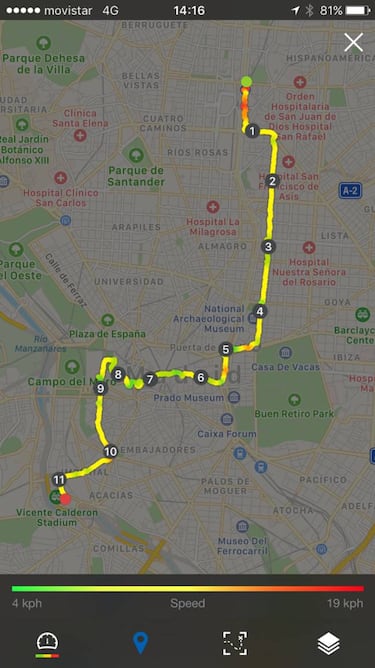
- Distance: 11.31 km
- Duration: 1:07:55 ("but we spoke to lots of people" is our excuse)
- Average pace: 06:00 min/km
- Average speed: 10.0 km/h
- Max speed: 18.1 km/h
- Elevation gain: 122m
Related stories
- Elevation loss: 248m